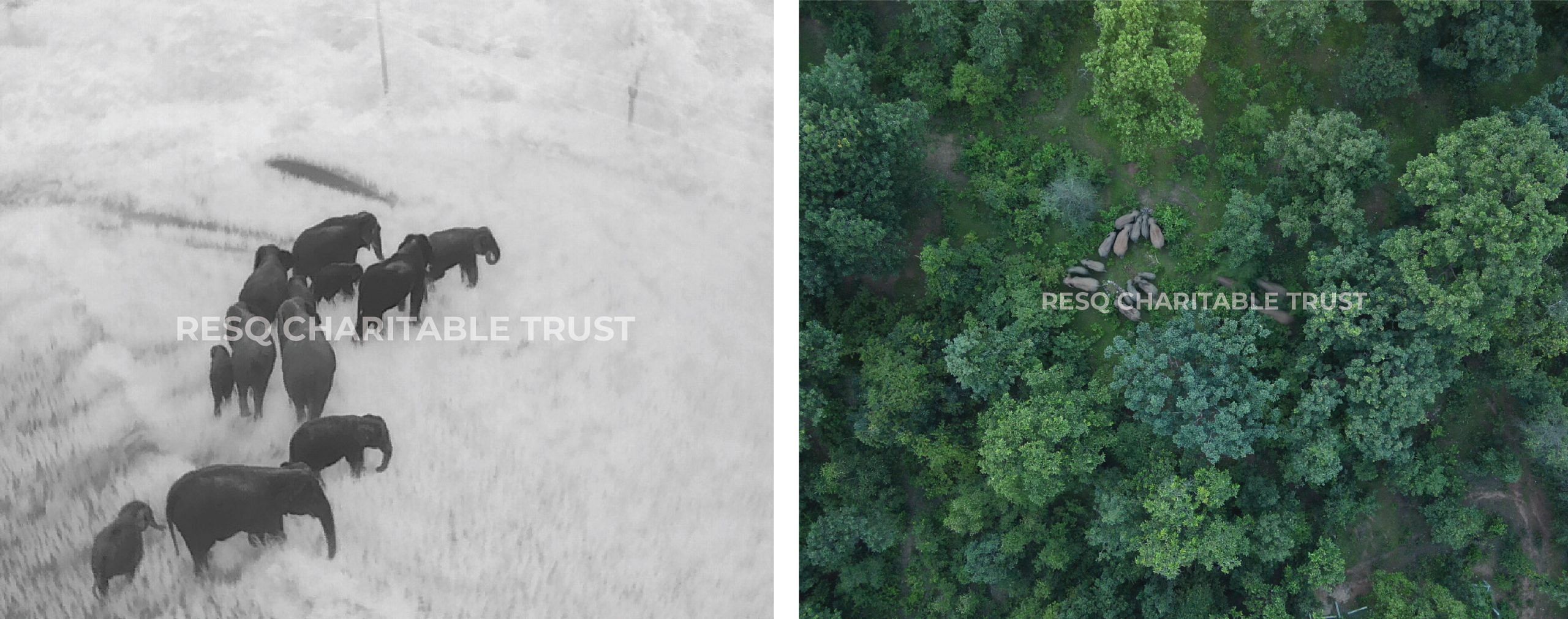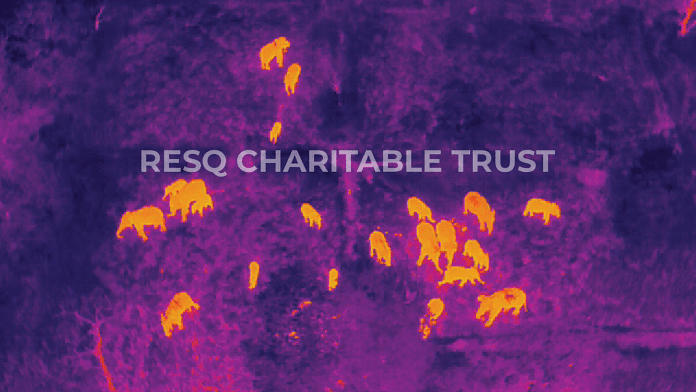In August 2022, a large herd of wild elephants entered Maharashtra’s Gadchiroli from Chhattisgarh. Then followed regular news of the elephants raiding agriculture fields and damaging homes in the villages they passed through. For more reasons than one, Gadchiroli is a challenging landscape to monitor wildlife on foot, and thus, the composition, behaviour, and movement patterns of this elephant herd remained largely unknown.
“This is the second year that wild elephants entered Maharashtra from Chhattisgarh. Last year, we observed that when they were at the border of Brahmapuri and Wadsa, the forest department teams on ground were prepared to manage any situation that would arise but predicting where the herd was and where on-ground efforts should be focused was a challenge. Shortly after that, we procured a thermal drone (unmanned aerial vehicle) and have been using it effectively to manage human-leopard conflict situations in western Maharashtra. Thermal drones make the invisible visible when you need it the most,” said Tuhin Satarkar, director for wildlife rescues and aerial drone operator at RESQ Charitable Trust.

This year, upon the request of the Maharashtra Forest Department, Satarkar headed to Gadchiroli again with Amit Todkar, Aniket Sayam, Naresh Chandak, and Nachiket Utpat from the RESQ team. They worked with the Gadchiroli and Wadsa Forest Division officers as well as other NGOs like Stripes and Green Earth Foundation (SAGE) and Farmers for Forests, all of who played a crucial role in handling a species that was relatively new to the community there.
During the day, the elephants rested in the forest and would start moving after dusk. “It was risky for a limited number of individuals to track this herd on foot in that landscape,” said Satarkar. By using the thermal drone, they were able to safely observe the herds’ composition and behaviour from a distance.
“Also, it does not disturb the animals as it is quite silent and works well even if observed from a 100-plus-feet height from ground. Most importantly, its thermal ability allows for safe monitoring at night, which is what is needed for elephants,” said Satarkar.
“This is the first time in India that wild elephants have been monitored using thermal UAV. From multiple captures of the thermal drone, we now know that the herd is 23 in number, which includes six young calves. We also know that if left relatively undisturbed, the herd does far less crop damage in the fields and that they only need to be deterred if they come too close to villages,” said Sunil Limaye, principal chief conservator at Forests (Wildlife) Maharashtra.
Wild elephants are new to the people there. To avoid human casualty and harm to the animals, Limaye said that the Maharashtra Forest Department has actively worked on ensuring speedy compensation. “The teams on the ground are also proactively conducting community awareness programs to sensitise villagers and educate them about living safely around wild elephants.”
Heavy rains, however, posed a challenge as it was not possible to fly the drones in such weather conditions. But the information it provided throughout is proving to be invaluable.
“The thermal drone imaging is a complementary tool in the effective management of human-wildlife conflict and can be used in conjunction with other management tools like early warning systems (EWS), on-ground tracking, community outreach efforts, forest development etc.,” added Satarkar.
Also read: ‘To live is to kill’ — a Malabar pit viper and gliding frog affirm nature’s basic law
Thermal UAVs and Leopards
In western Maharashtra, where human-leopard conflict situations are rapidly rising due to shift in land use patterns and there’s an increase in resources for leopard population to thrive outside protected forest areas, it is common for the RESQ team to be called upon by the forest department to assist them when a village or community begins to feel threatened by livestock kills or the recurring sighting of leopards near human settlements.
Sonesh Ingole, RESQ field coordinator, recalls an incident when a local farmer near Solapur saw a leopard in his banana plantation field. This village had not had any encounters with a leopard before. Soon, all the villagers gathered around the field with sticks to “deal with it” if it came out.
“Generally, the mob mentality is such that most people who gather would have run or quickly dispersed if the animal decided to show itself, but situations like these are unpredictable and can get out of hand. Our team was luckily in the area at another rescue situation, so we went there to assist the forest department teams who were already dealing with the angry mob of people,” said Ingole.
The thermal drone detected the leopard in the plantation. The team showed the images to the villagers and explained that it was possibly just passing through but was now trapped there because they had surrounded the plantation.
“The villagers decided to back off on their own. The forest department teams ensured that people left for their own safety and the leopards. The leopard moved out of the field that same night and the next morning when people were shown that, their narrative had changed to ‘it was only passing through’ and their obsession with pressuring the Forest Department to capture the leopard had completely passed,” said Ingole.
In another incident, when a local farmer was convinced that a leopard had moved into his field, thermal imaging was useful in showing him and the rest of the villagers, who had gathered at the spot, that it was a jungle cat that would certainly not harm them but would help them with pest control.
Also read: Orphaned and exposed, why these Indian leopard cubs can’t return to the wild
Future flights
Drones were historically used by the military in World War II. In the last few decades, they have become affordable and are more widely used for exploratory work and aerial photo and videography. They have also been extensively used in multiple sectors, including construction, disaster management, geographic mapping, agriculture, marketing, shipping and delivery, search and rescue operations.
Their application in wildlife monitoring is wide but was long restricted due to imagery potential being limited to day-time visuals. While monitoring applications are incredibly useful to conduct wildlife research, including population estimation of diurnal species and wildlife corridor mapping, the thermal drone has opened extensive applications in the prevention and management of human-wildlife conflict.
Wildlife management has become more challenging with time in India due to multifactorial complexities synonymous with development. Whether it is monitoring wildlife movement and behaviour, mitigating conflict, or assisting veterinary teams during chemical immobilisation and capture of wildlife on field, the use of thermal drones as an effective tool to complement existing on-ground efforts is yet to be explored widely. The positive news is that it has already begun with Maharashtra leading the way.
Neha Panchamia is Founder and President, RESQ Charitable Trust. She tweets @NehaPanchamia. Views are personal.
(Edited by Humra Laeeq)



